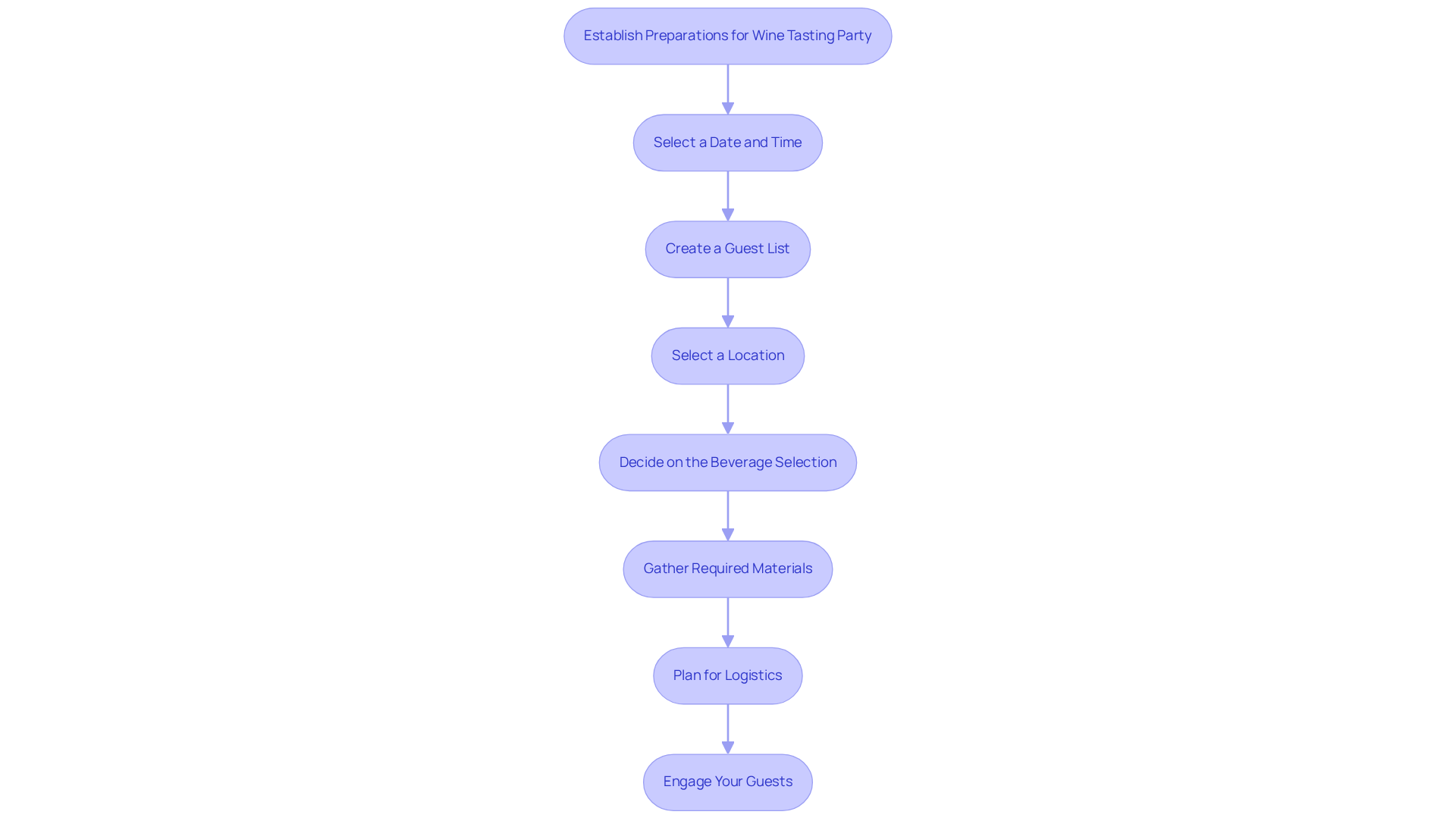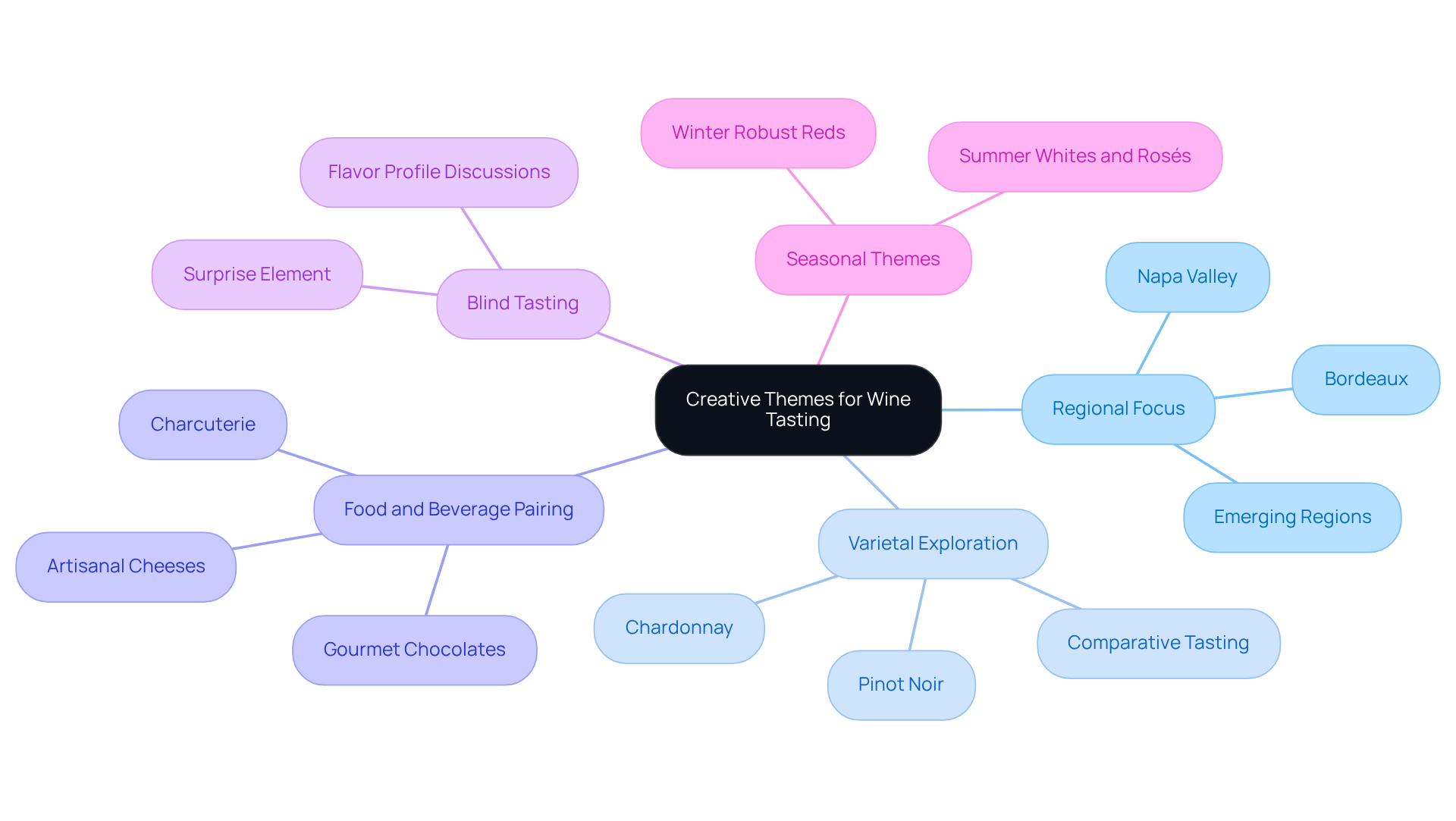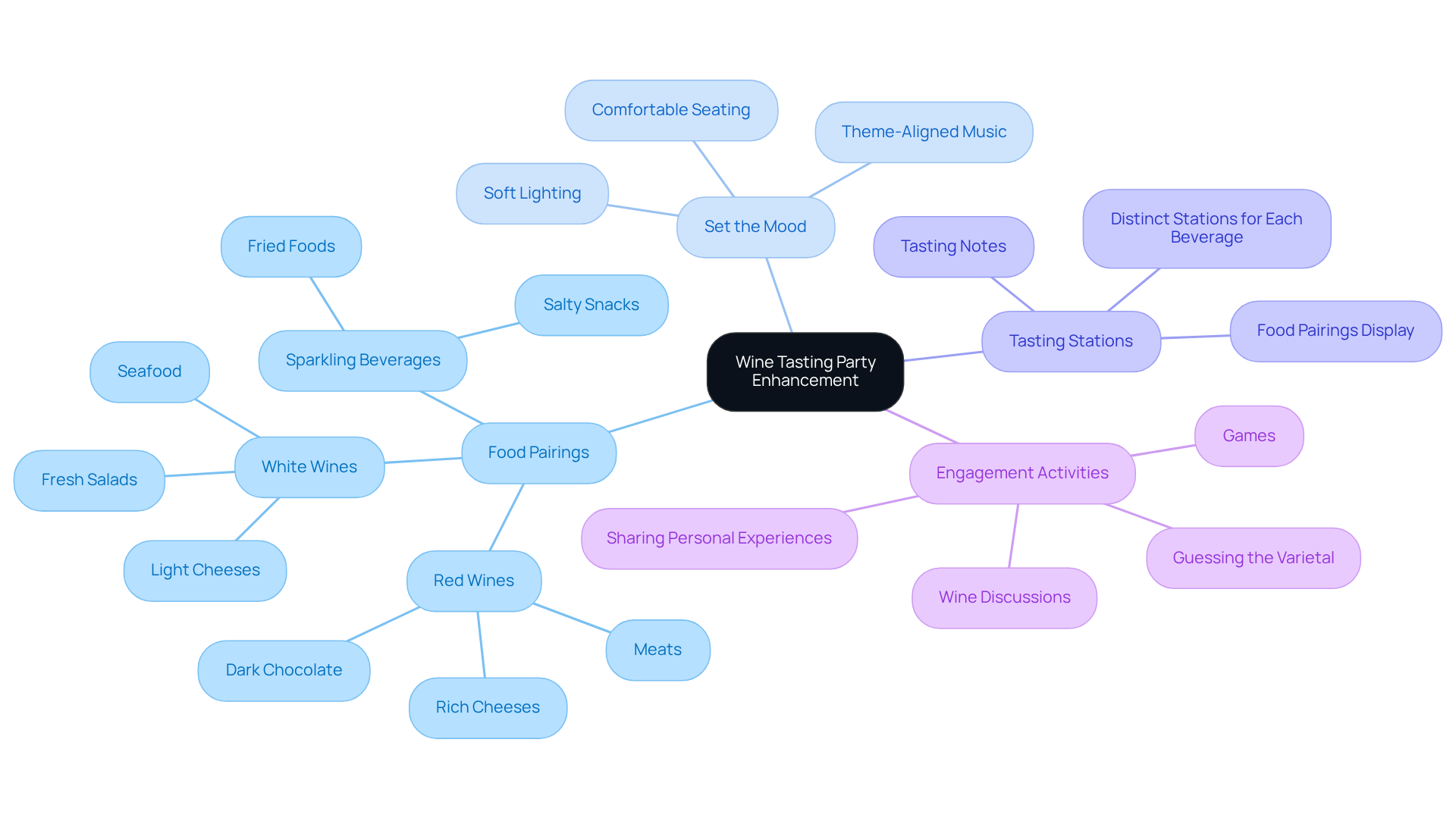Overview
To ensure a successful wine tasting party, meticulous planning is paramount. This includes:
- Selecting the right date
- Curating an inviting guest list
- Choosing a diverse beverage selection
- Crafting an appealing atmosphere
Such preparations not only enhance the experience for attendees but also foster interaction and engagement. Creative themes and thoughtful food pairings serve to elevate the event, ultimately transforming it into a memorable occasion. By prioritizing these essential elements, hosts can create an enjoyable and impactful experience that resonates with their guests.
Introduction
Crafting the perfect wine tasting party requires more than merely selecting fine wines; it necessitates meticulous planning and creativity to forge an unforgettable experience. By delving into essential preparations, unique themes, and ideal food pairings, hosts can transform their gatherings into memorable events that truly delight the senses.
Yet, with a plethora of options available, how does one discern the right elements to guarantee enjoyment and engagement among guests? This article explores innovative ideas and practical tips that promise to elevate any wine tasting into a captivating celebration.
Establish Essential Preparations for Your Wine Tasting Party
To kick off your wine sampling party, it is essential to begin with clear . Here are the crucial preparations to consider:
- Select a Date and Time: Choose a date that accommodates your attendees, ideally on a weekend evening when people are more relaxed.
- Create a Guest List: Limit the number of attendees to foster an intimate atmosphere, ideally between 8 to 12 people, which is perfect for encouraging interaction and engagement.
- Select a Location: Whether at home or a rented space, ensure it has ample room for attendees to socialize comfortably and appreciate the sampling experience.
- Decide on the Beverage Selection: Curate a diverse assortment of drinks, ideally 8 to 10 bottles for 12 attendees, including 4 to 6 different types to provide a range of flavors and styles. Consider including a mix of reds, whites, and perhaps a sparkling option to cater to varied preferences.
- Gather Required Materials: Ensure you possess sufficient beverage glasses, spittoons, napkins, and evaluation sheets or scorecards for attendees to note their impressions. Offering a tasting grid can also enhance their enjoyment by assisting them in recognizing flavors.
- Plan for Logistics: Arrange for transportation if necessary, especially if guests will be sampling multiple wines. This ensures safety and allows everyone to fully enjoy the experience. Additionally, consider having a backup plan for any technological difficulties that may arise, especially if incorporating virtual elements.
- Engage Your Guests: Encourage dialogue among participants during the sampling to enhance interaction and enjoyment. Gathering attendees' contact details can also be advantageous for upcoming events and loyalty initiatives.
By establishing these arrangements and incorporating ideas for a wine tasting party, you create an organized atmosphere that enables attendees to focus on enjoying the beverages and each other's company, thereby improving the overall enjoyment of the gathering.

Explore Creative Themes and Unique Ideas for Wine Tasting
To elevate your tasting event, consider using ideas for a that incorporate imaginative themes to engage attendees and enhance their experience. Here are some unique ideas:
- Regional Focus: Curate a selection of beverages from a specific area, such as Napa Valley or Bordeaux. Inform visitors about the distinct terroir and production techniques that characterize these regions, cultivating a greater admiration for the beverages. According to the latest trends, consumers are increasingly interested in wines from lesser-known regions, adding an element of discovery to your event.
- Varietal Exploration: Center your tasting around a single grape variety, like Pinot Noir or Chardonnay, showcasing different expressions from various producers. This approach allows guests to compare and contrast the nuances of the same grape grown in different environments. As younger consumers seek distinctive and informative opportunities, this theme aligns well with their preferences.
- Food and Beverage Pairing: Design a tasting that pairs beverages with specific foods, such as artisanal cheeses, gourmet chocolates, or charcuterie. This engaging activity motivates visitors to discover harmonious flavors and deepens their comprehension of how food and beverages interact. Unique beverage pairing dinners have become popular, frequently showcasing visiting winemakers or sommeliers, further enhancing the enjoyment.
- Blind Tasting: Introduce an aspect of surprise by having participants sample beverages without being aware of their identities. This format can spark lively discussions and debates about flavor profiles, creating an engaging and educational experience. As highlighted by industry experts, this approach can enhance guests' appreciation for the nuances of the beverage.
- Seasonal Themes: Align your sampling with the seasons, featuring wines that complement seasonal foods or evoke the essence of the time of year. For instance, summer samples could highlight refreshing whites and rosés, while winter events might focus on robust reds. This corresponds with the increasing trend of experiential dining, where consumers pursue unforgettable and immersive encounters.
These themes not only enhance the sampling journey but also provide ideas for wine tasting party narratives, enabling guests to engage more profoundly with the beverages and one another. As consumer preferences evolve, particularly among younger groups who desire distinctive and informative experiences, these innovative strategies can significantly boost the attractiveness of your events.

Curate Food Pairings and Set the Right Atmosphere
Establishing the right ambiance and food combinations is essential for your ideas for a wine tasting party to be elevated. Here’s how to achieve this:
- Food Pairings: Select appetizers that complement the beverages you’ve chosen. For instance:
- Red Wines: Best paired with meats, rich cheeses, or dark chocolate.
- White Wines: Ideal alongside seafood, light cheeses, or fresh salads.
- Sparkling Beverages: Pair with salty snacks or fried foods to enhance the drink's crispness.
- Set the Mood: Craft an inviting atmosphere through soft lighting, comfortable seating, and music that aligns with the event's theme.
- Tasting Stations: If space allows, create distinct stations for each beverage, complete with tasting notes and food pairings. This encourages guests to explore at their own pace.
- Engagement Activities: Consider incorporating games or discussions about the wines, such as guessing the varietal or sharing personal wine experiences, to foster interaction among attendees.
By thoughtfully curating food pairings and establishing the right atmosphere, these ideas for a wine tasting party significantly enhance the overall experience, making it enjoyable and memorable for all participants.

Conclusion
Planning a memorable wine tasting party requires careful consideration and creativity, ensuring that both the beverages and the atmosphere come together seamlessly. By establishing essential preparations, exploring unique themes, and curating thoughtful food pairings, hosts can craft an engaging experience that delights attendees and fosters meaningful connections.
Key insights underscore the importance of:
- Selecting a suitable date and location
- Crafting a diverse beverage selection
- Encouraging guest interaction
Furthermore, incorporating creative themes, such as regional focuses or blind tastings, can significantly enhance both enjoyment and the educational aspect of the event. Thoughtful food pairings and an inviting ambiance elevate the overall experience, transforming it into a celebration of flavors and friendships.
Ultimately, a well-executed wine tasting party serves as an exceptional opportunity to explore new tastes and deepen appreciation for wine culture. By embracing these essential ideas and innovative strategies, hosts can create unforgettable gatherings that resonate with guests long after the last sip is enjoyed. Engaging in this delightful social experience enriches personal connections and fosters a greater understanding of the diverse world of wines.
Frequently Asked Questions
What are the essential preparations for hosting a wine tasting party?
Essential preparations include selecting a date and time, creating a guest list, choosing a location, deciding on the beverage selection, gathering required materials, planning for logistics, and engaging your guests.
How should I select the date and time for the wine tasting party?
Choose a date that accommodates your attendees, ideally on a weekend evening when people are more relaxed.
What is the ideal number of guests for a wine tasting party?
It is recommended to limit the number of attendees to between 8 to 12 people to foster an intimate atmosphere that encourages interaction and engagement.
What factors should I consider when selecting a location for the party?
Ensure the location has ample room for attendees to socialize comfortably and appreciate the wine sampling experience, whether it is at home or in a rented space.
How many bottles of wine should I select for the tasting?
Curate a diverse assortment of 8 to 10 bottles for 12 attendees, including 4 to 6 different types to provide a range of flavors and styles, such as reds, whites, and possibly a sparkling option.
What materials do I need to gather for the wine tasting?
You will need sufficient beverage glasses, spittoons, napkins, evaluation sheets or scorecards for attendees, and a tasting grid to help recognize flavors.
What logistical considerations should I plan for?
Arrange for transportation if necessary to ensure safety after sampling multiple wines, and have a backup plan for any technological difficulties, especially if incorporating virtual elements.
How can I engage my guests during the wine tasting?
Encourage dialogue among participants during the sampling to enhance interaction and enjoyment, and gather attendees' contact details for future events and loyalty initiatives.




